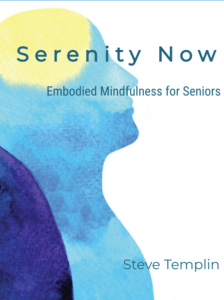Before you take that ‘deep therapeutic breath’ you might want to consider a few things about therapeutic breathwork when you’re a highly sensitive person.
First of all, breathwork can be very therapeutic, especially for HSPs. A gentler, slower, fuller, more rhythmical diaphragmatic breath signals to the brain that we’re safe. And with the perception of safety the brain and nervous system become more resilient and self-healing on potentially any level of mind, body, or spirit.
That same quality of breath also signals to those around us, via mirror neurons, that the experience of safety and its benefits is also possible for them. That same breathing rhythm can also be beneficial to our loved ones.
While mirror neurons are the best neurological mechanism to explain what happens when we’re in proximity to another human, HeartMath research suggests that electromagnetic fields help to explain how we can beneficially affect loved ones through our breathing and heart rhythms … even at a great distance.
So breathwork is good, yet it helps to be aware of it’s challenges for us to more fully and comfortably realize its benefits.
The Emotional Challenge of Breathwork
One of the ways that we protect ourselves from threatening feelings is to breathe less. Breathing less can be a very efficient strategy for protecting or numbing ourselves emotionally. When our brain learns that breathing less is an effective means of suppressing emotional pain, any number of other potentially dangerous or costly suppressive habits become less necessary.
It’s as if breathing pumps a flow of energy and feelings through our body and when we breathe less there’s less flow. Unfortunately, while we’re protected from the threatening feelings we’re also cutting ourselves off from the good as well … and from the present moment.
I had unconsciously held my breath for decades and then spent more decades learning (through trial and error) to breathe again. I have little recall of many of those years I spent holding my breath because I was consistently anesthetized to life’s emotional ups and downs, living in a kind of numbed-out limbo.
The challenge is how do we begin to breathe more consciously, when not breathing consciously, has allowed us to survive with less emotional pain. Who would want to focus on their breathing if it was going to cause more pain?
The solution is to make sure that our new relationship with our breath and body is based on kindness and safety. The challenge is learning how to be kind and gentle with ourselves, to go under our survival-oriented, defensive radar. The only way I know how to do this safely and effectively is with curiosity and compassion …. with heart.
Breathing Again with Qualities of the Heart
So, just what are qualities of the heart? We could start with noticing the physical location of the heart in our chest. We might aim more to the center of the chest to find the energetic center of the heart, akin to the heart chakra.
Let’s not stop there. One could be feeling into the heart center and just breathing mechanically and achieve some degree of psychological and physical benefit. My experience is that we can go deeper to not only feel better temporarily but deep enough to release emotional burdens from the past to more permanently free us up in the present moment.
The key to going deeper is to go safely and that is found in the heart-felt qualities that create more order in the brain and nervous system. When we breathe less mechanically and more consciously, more curiously, more kindly, and more compassionately we’re activating more heart wisdom and subsequently more safety and deeper healing in the brain, body, and psyche.
Simple Heart Focused Breathing
Breathing techniques are growing in popularity and you may be aware of a number of them. I will not mention others that I’m aware of here so we can focus more on the underlying fundamentals that apply to healing with any other form of breathwork.
While there are many varieties of therapeutic breathing styles, Heart Focused Breathing is a great place to start practicing breathing with heart wisdom. I’ve found that when we add the heart qualities to any breathing process it becomes more meaningful and effective.
What follows are my instructions for Heart Focused Breathing and a link to a more formal PDF guide from HeartMath. Please feel free to use whatever guidance you find most helpful.
Before you begin take a moment to tune in to yourself and just take stock of how you are doing, both physically and emotionally. Do your best to notice curiously (“Oh, that’s curious how my neck is kind of tight like a rubber band”), since curious noticing produces more neurological order and potential healing than judgemental noticing (“Damn this tight neck, it’s always bugging me”).
This is very important. Safety is our main concern. Safety and a relative degree of comfort are the emotional salves that allow deep healing. We should always be relatively comfortable when doing any awareness exercise. If this or any other awareness-based practice becomes too much, or too uncomfortable, please stop. Feel free to write to me for feedback.
- Tune into your heart, ideally into the center of your chest. If you have any difficulting connecting with a felt sense of your heart center feel free to place one or both hands over the center of your chest.
Notice what sensations are available to you. There may be sensations that are more physical, like tension, pressure, or heaviness. There may also be more emotional feelings or sensations, like excited, sad, anxious, or fearful.
Whether the experience is more physical or emotional, or a combination of both, do your best to notice curiously. Again, if what you’re experiencing at the moment is too intense, just pass on this exercise for now.
2. Now begin to breathe gently and slowly into your heart. You might imagine or notice how your heart feels as you breathe slowly through your nose, noticing the sensations or feelings that you became aware of in step one.
Breathe slowly, ideally at a rate of about five seconds in and five seconds out. If five seconds requires too much effort or strain, breathe less. You could try a four second cycle or a three second cycle. Find a rhythm that’s comfortable and stick with it for one to three minutes.
Over time and with practice you’ll find that your system will accommodate more time with more safety and comfort. Practicing Heart Focused Breathing for a few minutes a few times a day would be a helpful practice.
Once again, it’s safety that counts. Another way to frame this safety consideration is to think of breathwork practices as more about a new way of relating to yourself, or connecting with yourself, than a mechanical technique. You’re nurturing a new relationship with your felt self that produces positive shifts in your biology and psychology.
Connecting with heart, from your heart is very likely the essence of self-healing.


 Steve is a retired Doctor of Oriental Medicine, Acupuncture Physician, and HeartMath Trauma-Sensitive Certified Practitioner with over 35 years of clinical experience in the fields of Energy Medicine, Energy Psychology, and Biofeedback.
Steve is a retired Doctor of Oriental Medicine, Acupuncture Physician, and HeartMath Trauma-Sensitive Certified Practitioner with over 35 years of clinical experience in the fields of Energy Medicine, Energy Psychology, and Biofeedback. 